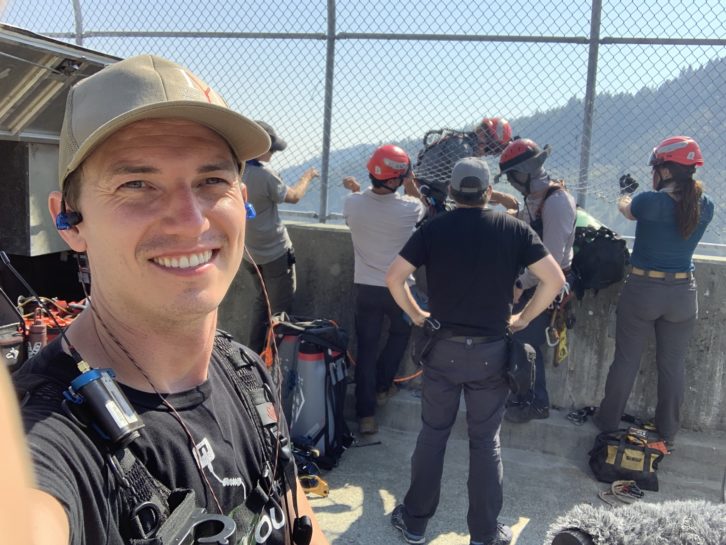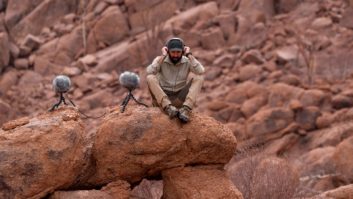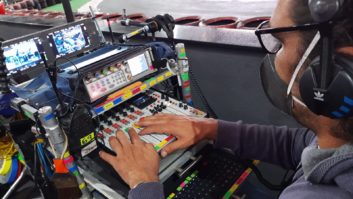
Sacramento, CA (November 16, 2021)—Location production sound mixer Donovan Murphy, whose work ranges from corporate and government projects to news and documentaries, uses a main rig that revolves around the Lectrosonics all-digital D Squared family.
Murphy was impressed with his rig’s ratio of output power to usable range at a recent vertigo-inducing outdoor gig. “I recently worked on a documentary series about rope access — crews who climb towers and bridges, that kind of thing,” he says, “I worked on the California portion in two locations. The first, Foresthill Bridge, is the fourth-highest in the U.S. at 730 feet. I’m terrified of heights, but these guys just put on a safety harness and go strutting out onto those beams like it’s nothing. I’m certainly not going out there with them, so I thought range would be an issue.”
As things turned out, it was not. “I certainly wasn’t going to go out there with them carrying my audio bag, so I was glad I’d be able to send dweedle tones to the DBSMDs we had on them to put them in record mode,” explains Murphy, referring the DBSMD’s ability to double as a stand-alone microSD recorder. “I didn’t need to. At 50 milliwatts output power, I was getting great signal at the nice, safe sidelines!”
Capturing Good Sound for Bad Sport
The second location, New Bullards Bar Dam on the Yuba River, presented a similar challenge. “The dam was interesting because it’s not symmetrical from left to right,” says Murphy. “We went all the way to the bottom to get these wide shots and drone shots of guys rappelling down the dam’s surface. Again, at 50 milliwatts, we could hear them loud and clear from about 800 feet away, and that was just using whip antennas [on the DCR822 receiver]. With dipole antennas, we could roam as much as 2,000 feet away.”
Even though Murphy wasn’t personally suspended in midair, the thought of a subject’s beltpack taking a tumble caused no butterflies. “I’m very careful about securing my gear,” he notes, “but Lectrosonics has always been so tough that if one of those transmitters went bouncing down the dam, I’m pretty sure I could just pick it up and use it. The scratches would just add character!”


